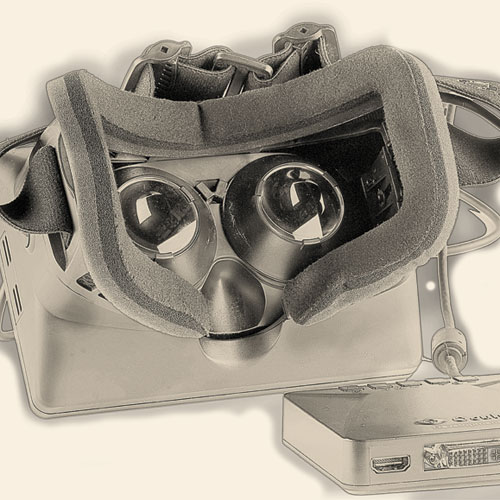There’s a longstanding mantra at NPR, says Brian Boyer, the organization’s visuals editor. “If it doesn’t work on mobile, it doesn’t work.” Making stories mobile-friendly has been the ambition of many newsrooms for the better part of a decade. Writers have squeezed pieces into 140 characters; companies created multimedia teams; storytelling methods have been restructured to fit Androids phones and iPads. The result? An evolving culture of different technologies striving to bridge the gap between readers and content. Here’s a look at some of those emerging platforms.

Wearable journalism
Google Glass, Apple Watch, Google Cardboard, Samsung Headgear VR and the Oculus Rift
Starting this season, the NFL will use radio-frequency identification technology to track player analytics; Georgia Tech’s School of Interactive Computing created gloves that teach blind people Braille in June 2014; Google is developing smart contact lenses with built-in cameras.
When it comes to journalism, Google Glass, the Apple Watch, and Facebook’s $2 billion acquisition of Oculus VR last year have technological engineers considering wearables to be media’s future platform.
“I do believe a mobile, hands-free, head-mounted display is inevitable,” says Robert Hernandez, professor of journalism at the University of Southern California, who taught the only journalism class based entirely on Google Glass in 2014. “Social media has laid the groundwork for something that we might not like but is a reality—which is always on, always wired, always consuming content, always experiencing potential news and capturing it.”

Virtual Reality Journalism
The Des Moines Register, Project Syria
Wearables and virtual reality go hand in hand, mainly because head-mounted gear is crucial for the virtual reality experience. Predominantly used for gaming and film, experiments from the past year show a strong potential for virtual reality and immersive journalism. The Des Moines Register recently transformed part of a print series about Iowa’s changing farms into a virtual experience, allowing users to explore a sixth-generation farm undergoing economic and demographic changes with the Oculus Rift. Last year, USC’s Media Interactive Lab worked on “Project Syria,” an immersive experience bringing users into a bomb explosion in an Aleppo street and a refugee camp in Syria.

Drone Journalism
The use of unmanned aircraft for journalism is a relatively new idea; one of the first experiments was in 2011 by The Daily, the now-defunct iPad newspaper. According to Matt Waite, professor of journalism and mass communications at the University of Nebraska-Lincoln, “drones are the next major tool in the tool box.” Great for large-scale stories like natural disasters, environmental change, and city developments, drones also show promise for aerial mapping and 3D modeling.
Waite, who is the founder of UNL’s drone lab—one of only two in journalism schools nationwide—is fighting restrictive regulations by the Federal Aviation Administration, whose laws make it very difficult for businesses to use unmanned aircraft. By 2017, Waite predicts, drones will be more accessible for journalists.
Some major advancements of the digital age
1995
18 million Americans are online. Craigslist, eBay, and Internet Explorer launch
1998
Google launches
1999
Apple includes wifi on its laptops
2003
Blakberry introduces its first smartphone
2004
“The Facebook” is created
2005
YouTube launches
2006
Twitter is founded
2007
iPhone hits the market
2010
Instagram is created
iPad is invented
2011
Snapchat launches


